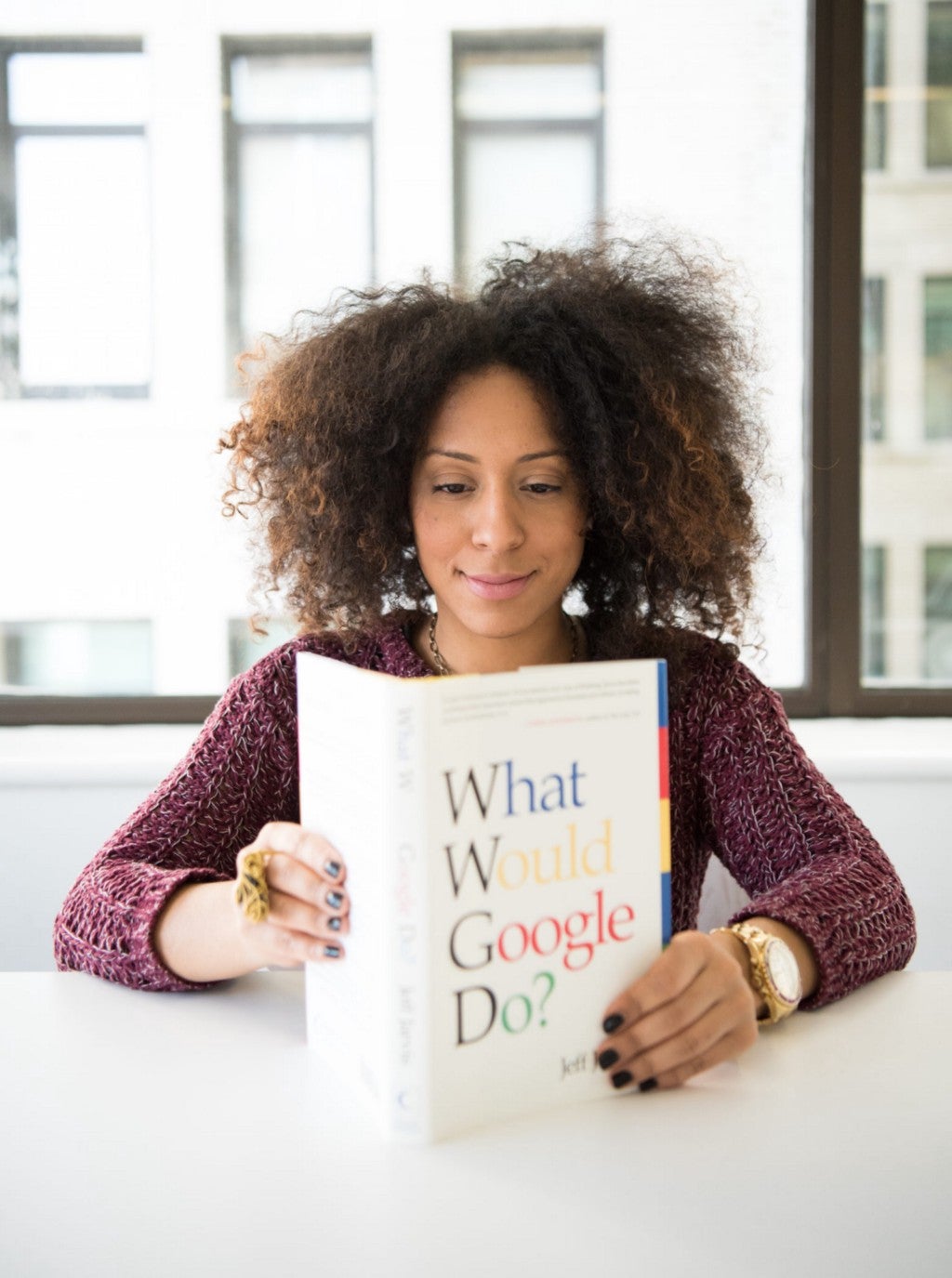Women laughing alone with salad. Shirtless men weighing themselves while texting. Someone inexplicably dropping a steak onto a baby’s face. Literalized metaphors about the dangers of fast food.
Stock photos are famous for their dumbness, their fakeness, their weird high-gloss lighting. But they’re funny because they’re the visual proof of an information gap: The photographer is taking these pictures so that someone might buy them to illustrate a particular idea, but they don’t actually know what idea that final buyer will want to illustrate.
To maximize their chances of selling a photo, stock photographers try to represent everything they can think of. Every idea, every social situation, every action, trend, pun, market segment — literally every possible thing, and every possible type of person. Except, notably, people who aren’t white.

Search for a generic term on some of the major stock photo databases like iStockphoto, Shutterstock, or their cooler competitors Unsplash and Pexels, and all you’ll find is a sea of white faces. Brides, women, men, fun: According to the stock photo sites, these are almost exclusively white people things.
But not for long. In the past year, a new wave of websites dedicated to offering stock photos of people of color has sprung up to combat the eerie, overwhelming whiteness of the stock world. Two focus on women of color in particular — CreateHER Stock and the free Women of Color in Tech database — while another pair of sites, Pixels in Colour and Colorstock, are trying to diversify the stock photo world as a whole.

“I worked as a PR professional for 15-plus years,” says Jenifer Daniels, who founded Colorstock in 2015, “and I always had a challenge finding authentic-looking images of people of color.” She recalled one instance, when she was planning a Martin Luther King, Jr. Day event at a university, where she couldn’t find a single image of a diverse audience sitting at a gala dinner event listening to a speaker. “We had to just draw the image instead, and then tell the photographers at the event to get these shots for next year.”
Cynthia Onyejiji, who founded Pixels in Colour in early 2016, says that her inspiration came in the form of a Facebook comment when she was working in digital marketing. “I had put stock photos into an article, and an African-American girl asked, ‘Does this brand only cater to one race? I’ve never seen a photo of a person of color on here.’ I didn’t even realize I was only using images of white people.” When she set out to change that, she discovered how hard it was to find high-quality images of POC. “I’d have to search for hours,” she says.
Onyejiji and Daniels saw that lack of diversity as a disservice both to the viewing public and to the companies using stock photography. “I don’t think brands realize how much people want to see themselves represented,” Onyejiji says. “You can think of yourself as a predominantly white brand, but on social, it’s so expansive that you reach people of all races.” If a company looks like it is only for white people, it might lose out on the shot that wider, more diverse market.

In the year since Colorstock launched, Daniels has seen more and more companies come around to that way of thinking. “Companies that were already focused on people of color have been like, ‘Oh my goodness, you’re finally here,’” she says. “But right now with media, and politics, and tech, it’s a perfect storm — people are becoming conscious of this, and starting to see that this is something their customers want.”
Besides stock photo users and their target audiences, there’s a third group of people who stand to benefit from this new push for nonwhite stock photos: the photographers themselves. Both Colorstock and Pixels in Colour try to recruit diverse photographers. Daniels says that 90 percent of her company’s photographs were shot by people of color.

“When I look at the imagery they provide us, I can see the lens,” Daniels says, meaning the way the photographer’s particular perspective shines through. “In the way they photograph families, or a child, I can see wow, a mom took this picture, or I see masculine tones pop up in photography from our men.”

Onyejiji says that the overwhelming whiteness of the stock photo world can be partly explained by the slim opportunities available to photographers who aren’t white. “I think photographers of color are often overlooked professionally, but if you look at Instagram, I think it’s clear that if they were given an equal chance they’d excel in the stock world.”
But what about the overwhelming corniness? Does representing people of color in stock photography mean representing them as unicycling businessmen, or babies on laptops?
“I want to stay away from that,” Onyejiji says, and Daniels agrees. The current trend in stock photos is toward higher-resolution images that look like they could be pulled from a magazine photo essay or scraped from a rich friend’s Instagram (assuming that friend only knew white people). In our image-saturated moment, when everyone is constantly sharing pictures of everything on their phones, there’s a lower tolerance for hokey studio shots, and less need for professional photographers to stage wacky scenarios.

But on the less curated edges of the internet, low-budget bus ads, and the pamphlets at the doctor’s office, ridiculous stock photos still reign supreme. And Onyejiji admits that adding some nonwhite faces to that goofy mix couldn’t hurt.
“There’s still a place for those corny images — I think stock photography is 90 percent corn” Onyejiji says. “But it should be diverse corn.”

Sam Dean is a staff writer at MEL.
